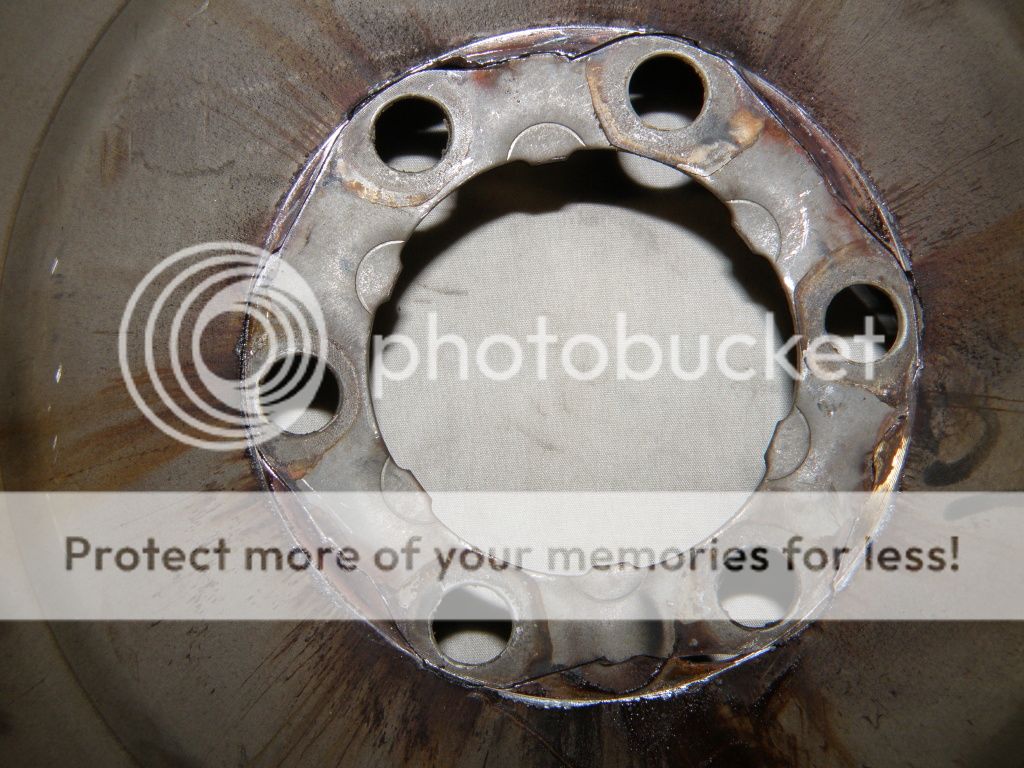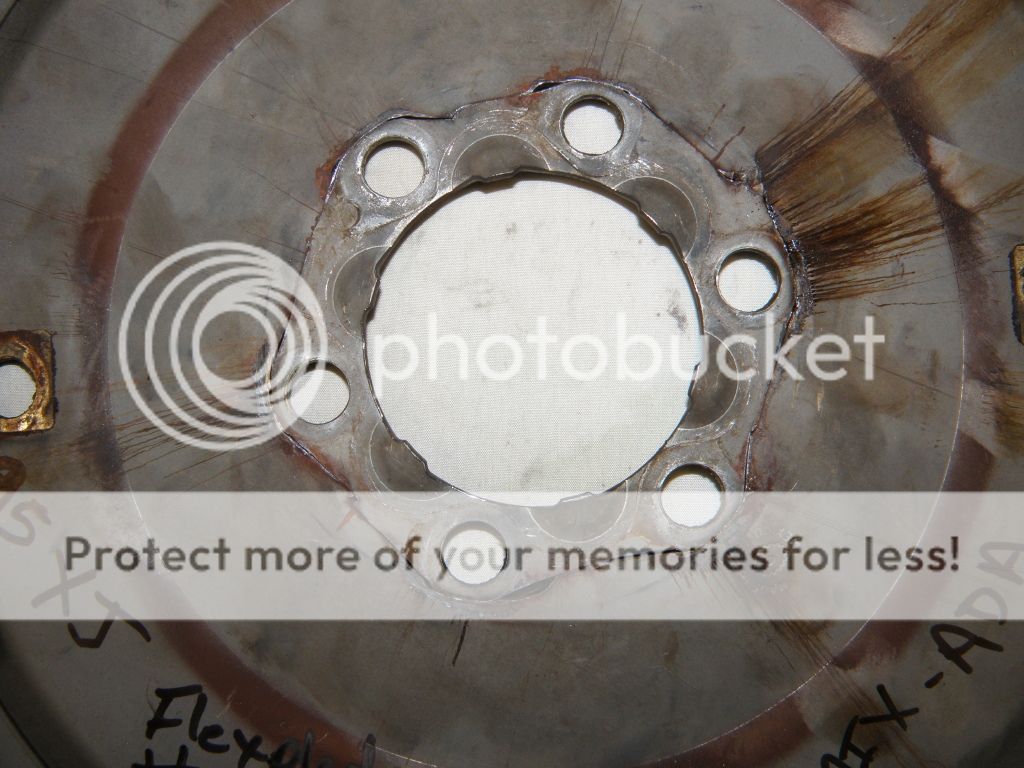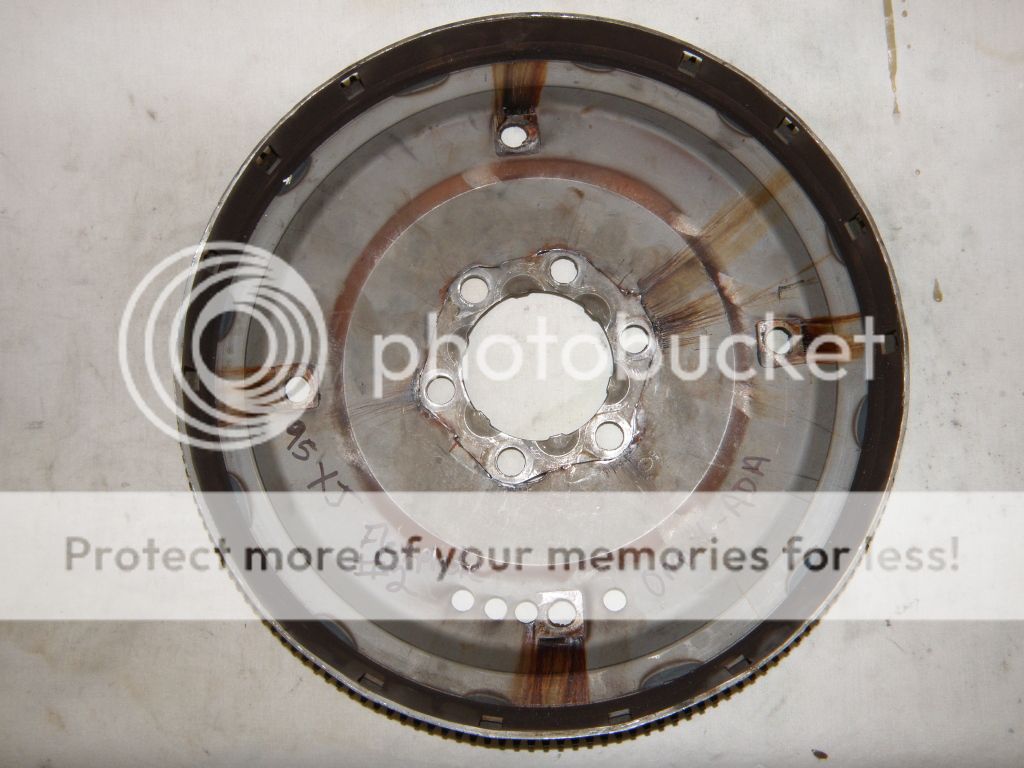ALL of this information is from a tech bulletin from ATP-INC.COM and a copy of the link.
http://www.atp-inc.com/Portals/0/tech/10-10.html
When replacing an automatic transmission flywheel (flex-plate) because it was either cracked or completely broken at the center, indicates a problem exists somewhere within the vehicle's power train assembly.
The illustration below is a standard setup of a flex-plate mounted to an engine assembly. Let us pay close attention to these critical areas that may possibly cause failure to the flex-plates.
If a transmission assembly has been removed from the engine assembly, re-installing the transmission plays a critical row on how the bellhousing is mated to the engine. If the dowel pins are worn or the transmission case is damaged, it will not allow the transmission to mate and bolt up correctly to the engine causing excessive movement between the both units. Ultimately, this will allow more than the recommended flexing of the flex-plate.
The fix would be repairing the transmission's case and/or replacing the worn dowel pins.
When installing the flex-plate to the crankshaft area, measuring the engine crankshaft endplay is also a critical area that may affect the flex-plate. More than allowable movement of the crankshaft due to a worn thrust bearing will allow the crankshaft to walk fore and aft causing stress on the center of the plate. High mileage vehicles are prone to this condition.
The fix would be installing flywheel shims to reduce stress on the flex-plate's center.
Here are other possible causes the will also contribute to flex-plate failure:
- Worn or broken engine and/or transmission mounts.
The Fix: Replace mounts
- A rebuilt torque converter and/or front pump was installed on the transmission during a transmission rebuilt. Rebuilding the torque converter and/or front pump removes metal and increases clearance at the flywheel.
The Fix: Install flywheel shims
- Out-of-balance engine, harmonic balancer or torque converter.
The Fix: Balance engine or replace the harmonic balancer or torque converter
- Worn front pump bushing will cause excessive movement of the torque converter.
The Fix: Replace the front pump bushing
- Failure to install the flex-plate perpendicular to the crankshaft recess area and/or over-tightening of the flex-plate bolts, tightening the bolts in the in-correct sequence.
The Fix: Install the flex-plate correctly to the crankshaft flange. Tighten the flywheel bolts to manufacturer specifications and in a star pattern sequence.
- Sudden shock to driveline-"neutral drops" (high engine r.p.m. in neutral and then dropping into drive), racing etc.
The most common applications that experience these types of flex-plate failures are high-mileage trucks (pick-ups, 4 X 4s, and vans).
Replacing the flex-plate is an expensive, time-consuming job and we all want the job done right the first time.
Remember! A broken or cracked out center of the original flywheel is a big warning flag that a problem exists and if the problem is not fixed, failure to the replacement flywheel will more than likely follow shortly.
Visit our website at
www.atp-inc.com for updated product information and Tech Direct® Bulletins.





